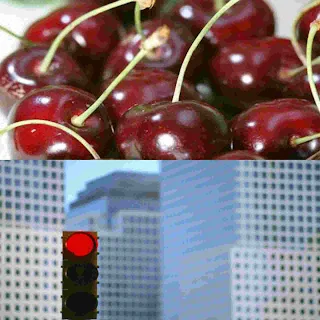Michigan State University scientists have discovered a use for tart cherry pits in cosmetic facial care products. It turns out that cherry seed extract can slow aging and improve skin health.
MDPI magazine indicates that sour cherries are used in the food industry to produce juices, pickles and wine. By-products, including cores, are burned or thrown into garbage piles, leading to soil, water and air pollution.
The researchers sought to find a use for this waste, and decided to extract the pulp of the seeds, then dry them in an oven and grind them into a powder, after which certain substances were extracted from its solution or dry mixture.
It became clear to the researchers that sour cherry pit extract is a rich source of antioxidants and polyphenols. Antioxidants are molecules that fight oxidation processes in the body. They work to restore and neutralize molecules damaged by free radicals that accelerate aging (reducing the level of oxidative stress), which can be caused by environmental pollution and prolonged exposure to UV rays. Polyphenols also have antioxidant properties. In addition, it is able to relieve inflammation.
Scientists have noted that using such an extract as one of the components of gels and face masks can prevent skin diseases, premature aging, psoriasis and even cancer.
An amazing project that could reduce stopping at red traffic lights by 30%!
Google shared an update on its AI-driven mission to reduce wait times, fuel use and polluting emissions at intersections.
Early indications reveal that stops could be reduced by around 30%, with emissions reduced by around 10%, with research showing that pollution at road junctions is around 29 times higher than on the open road.
All of this improvement is based on a wealth of data collected from Google Maps.
The app monitors vehicle paths and speeds – which is why it can warn you about traffic ahead – and creates artificial intelligence models of how vehicles and lights interact with each other.
Google Maps and AI technology means more data can be processed more quickly and, what's more, no need to update existing infrastructure.
“Green Light is able to analyze thousands of intersections simultaneously, optimizing flow across multiple intersections in a city,” wrote Yossi Matias, vice president of engineering and research at Google. “Our AI-based recommendations work with existing infrastructure and traffic systems, and city engineers can monitor the impact.” And see results within weeks."
Some of the insights that Google's artificial intelligence can provide include how the timing of traffic signals can be changed, or how traffic signals at different intersections can be linked, in order to keep vehicles moving more smoothly throughout the day and night.
The Green Light Project is now in 12 cities and four continents around the world, such as Seattle, Rio de Janeiro, Manchester, Hamburg, Budapest, Abu Dhabi, Jakarta and Bali.

